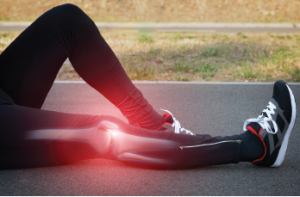
Monika Wisniewska / shutterstock.com
Although total knee replacement (TKR) surgery can improve pain and function in individuals with knee osteoarthritis (OA), many patients who are sedentary before undergoing TKR don’t increase their physical activity levels after surgery.
A new study led by Elena Losina, PhD, of the Department of Orthopaedic Surgery at Brigham and Women’s Hospital in Boston, examined why patients aren’t more active following TKR and looked at methods that could encourage them to increase their activity levels.1 The researchers found that telephonic health coaching (THC) combined with financial incentives (FI) led to an increase in steps taken and the amount of time spent exercising by study participants.
By conducting a randomized controlled trial following TKR surgery and postoperative physical therapy, the researchers hoped to assess whether financial incentives and health coaching might improve physical activity in TKR patients.
“People who suffer from knee pain for a number of years often fall into a sedentary lifestyle,” Dr. Losina says. “There’s a common fallacy that if you’re experiencing OA knee pain, you should rest your knees, but evidence shows low-impact exercise is actually good for the knees, and movement can circulate joint fluid and promote cartilage health and bone strength.”
In the study, Dr. Losina and her colleagues looked at 200 randomized subjects who had undergone TKR and examined whether their physical activity improved after surgery.
“TKR alone doesn’t lead to meaningful changes in physical activity,” Dr. Losina says. “[Although] surgery restores function and improves pain, patients who were sedentary before surgery require substantial behavior modification to improve their physical activity levels after surgery.”
Dr. Losina says rheumatologists could potentially play a role in motivating their patients to become more active.
“With recent moves to shift healthcare financing from paying for volume to value, expenditure of resources to improve physical activity will become increasingly attractive, given that physical activity is among the most important drivers of quality of life in OA,” Dr. Losina says.
Make Specific Exercise Recommendations
Rather than just telling people to change their lifestyle, Dr. Losina says the key to get patients to increase their physical activity lies in motivating them to understand the importance of making small changes.
“It’s like telling a student to get an A in class,” Dr. Losina says. “Patients need to know what [they need to do] to achieve that goal and [be] provided with the right kind of support.”

